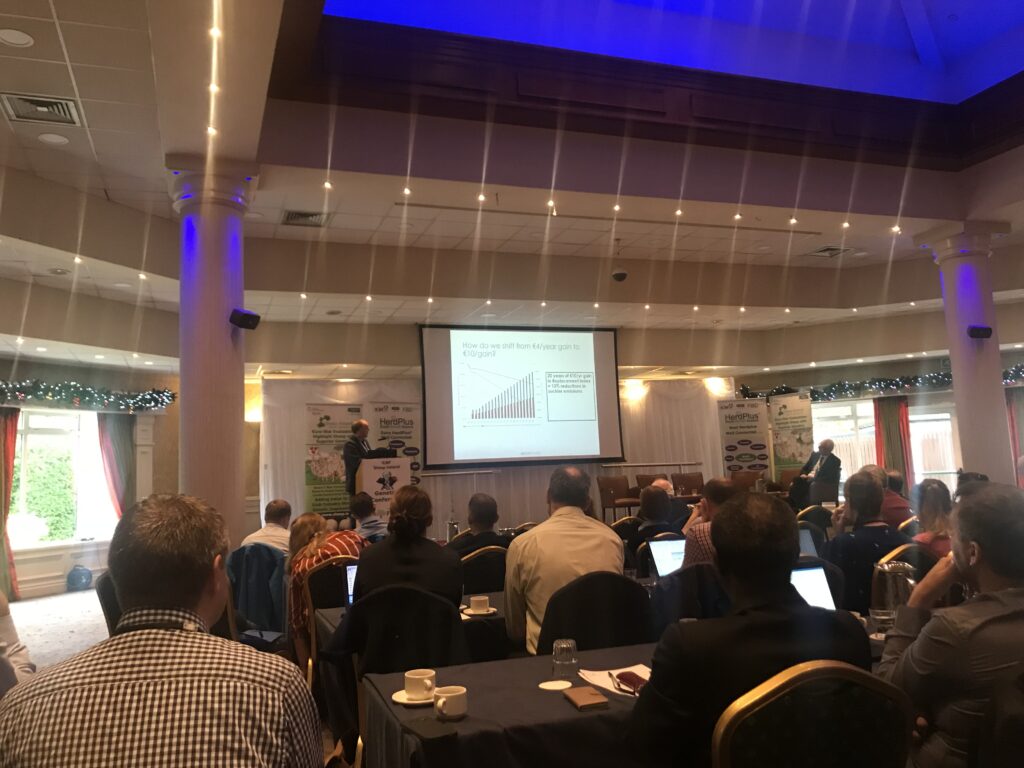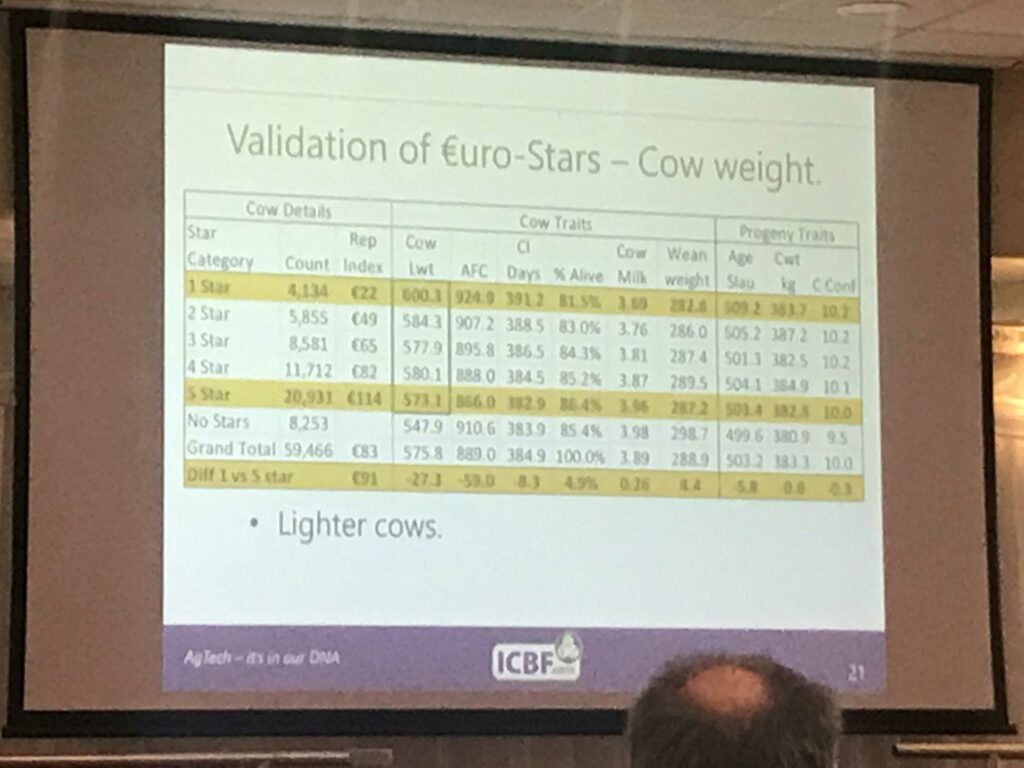The BDGP is an agricultural scheme which was launched in May 2015 and is designed to improve the genetic merit of the suckler herds and reduce greenhouse gas emissions from the Irish beef herd.
While the scheme has come in for some criticism from some farmers since its introduction, the Irish Cattle Breeding Federation’s (ICBF’s) Dr. Andrew Cromie explained the development of the BDGP over the years and how it has been beneficial to the Irish beef industry.
Speaking at the ICBF Conference in Athlone this morning, he said: “There’s a concern now that we are actually reducing the carcass weight of our national herd as a consequence of selecting on the replacement index.
“The genetic trends tell us that that is not the case. The genetics are still there, but we have just taken the accelerator off carcass traits. The positive is that we have turned the ship around in context of our suckler cow and now we must drive it on.
“The improvement in carcass traits is worth approximately €569 million to the Irish beef industry; selecting on these terminal traits is the equivalent to €33/suckler cow/year.
“So, it is a really positive outcome for the industry. But, it came at a cost,” he added.
“Whilst we have improved the terminal output, the bottom line is that it has come at a cost and a consequence of washing out those favourable milk and fertility traits out of our suckler cow.
“This was not without its challenges such as: fragmented farms; lower profitability; and lower margins, but there is no doubt about it that the BDGP has brought opportunity to collect more data accurately.
The value of maternal gain alone will be worth – over the next 15 years – approximately €540 million to the suckler beef industry.
Touching on challenges, Dr. Cromie said: “One of the big challenges facing the industry is greenhouse gases (GHG).
“And, the one thing we know from selecting under the replacement index is that if we can move the gain to €10/cow as opposed to the current €4/cow, there’s an opportunity to reduce GHG from the suckler sector by 10% over the next 20 years.”
‘We’re heading the right direction as an industry’
Looking at data collected on what the €uro-star index is delivering, Dr. Cromie noted that cows were lighter with better fertility; age at first calving has a difference of 60 days and 6% more were still alive.
“In addition to more milk and heavier weanlings, and this is all coming at no loss in terms of carcass weight or carcass conformation.
“A lot of people thought that – with the replacement index – we were going to ruin carcass output and terminal traits – but that is not the case.
“We are getting more profitable cows, more weanlings with no loss in carcass weight. And, this is repeatable across breeds,” he added.
The future
Continuing, he said: “80% of the suckler cows involved in BDGP herds are genotyped and there is a great opportunity to move to having 100% genotyped.”
Touching on new and social traits, Dr. Cromie explained: “We really need to challenge ourselves socially from a consumer perspective; will it be exceptable to dehorn calves in the future?
“Farmers might say that will never happen, but the reality of it is that it is starting to happen. There is a concern around animal welfare that we will not be able to get away from in the future.
We are also focusing on a trait that we can actually select cows that are lower on emissions and this is really important so we can move towards the 10% reduction target.
Concluding, he said: “In order to reach the €10 gain, it is absolutely crucial there is engagement with bull breeders. Because, the way genetics works, we need the bull breeders at the top of the pyramid generating the genes that propagate down into the commercial suckler herd.
“Without the bull breeders engaged and understanding the direction we need the beef industry to go, we will fail.
“We need to work closely with the breeds to help them and us to identify the top cows and bulls that are going to move the industry in the right direction.”


